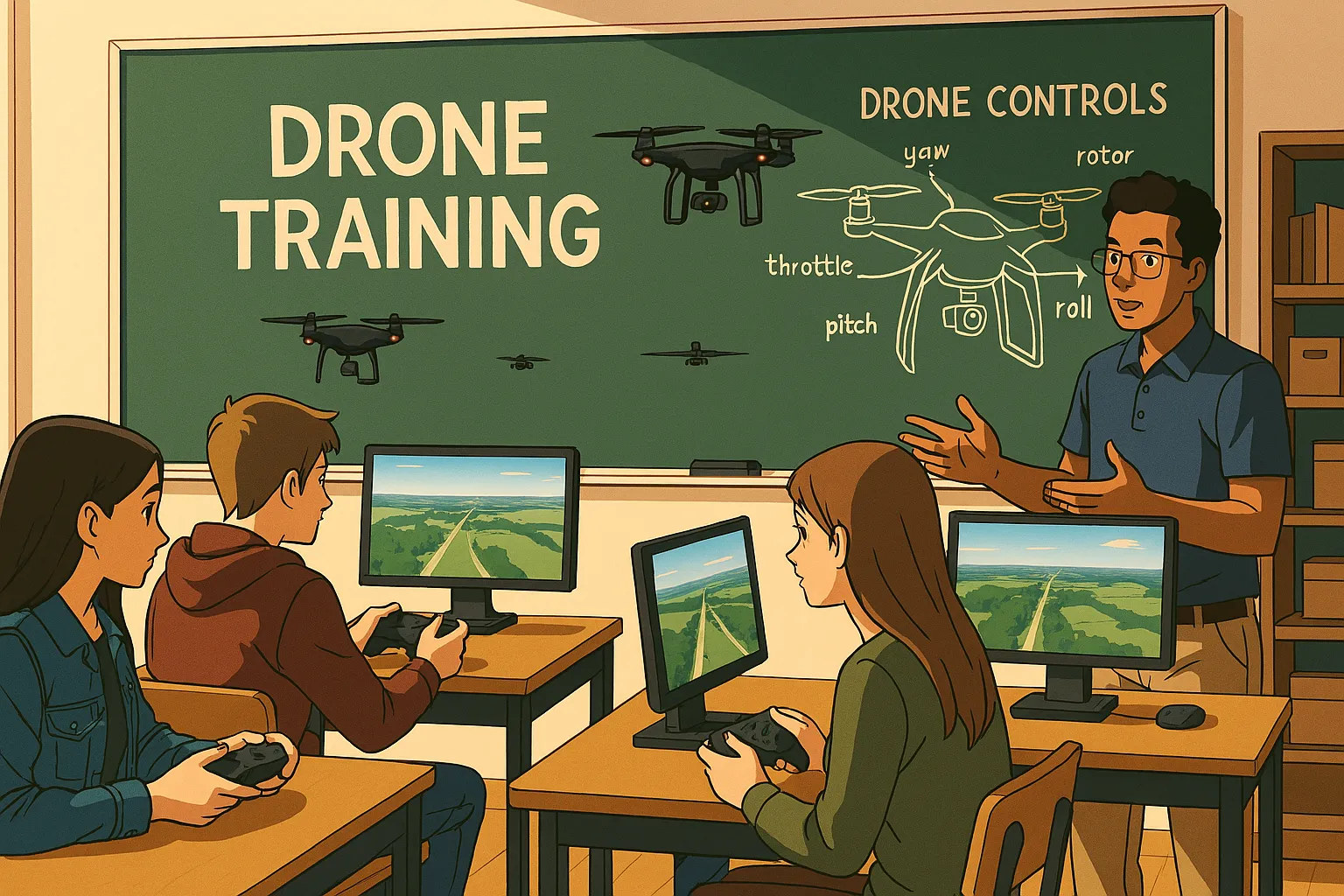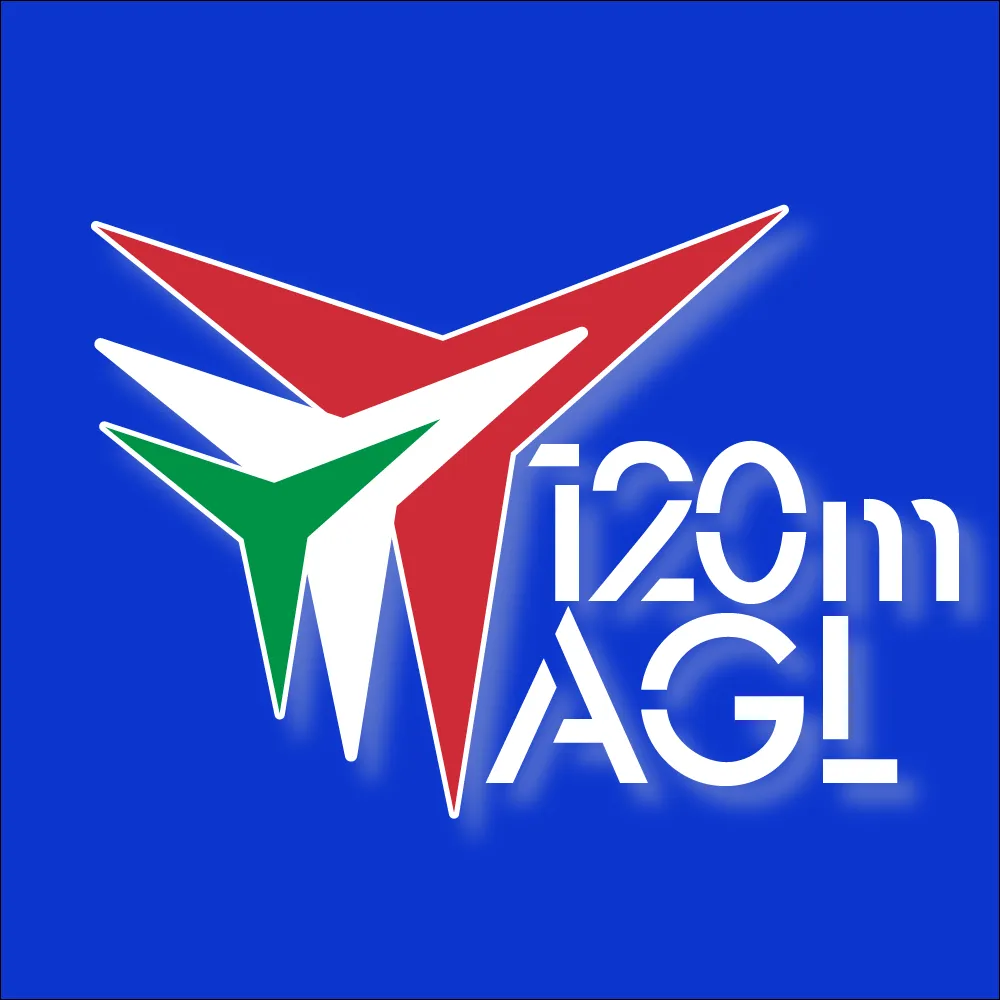UAS Training Programs: A Comprehensive Guide for European Drone Pilots
Introduction: Preparing for the Skies
Imagine you're standing on a picturesque hillside, drone in hand, ready to capture breathtaking views of the landscape below. The excitement is palpable, but as a responsible pilot, you know that flying a drone isn't just about the thrill; it's about safety, compliance, and skill. In the world of unmanned aircraft systems (UAS), proper training is not just advisable—it's a regulatory requirement under the European Union Aviation Safety Agency (EASA) guidelines.
At 120mAGL.com, we understand the importance of navigating the intricate landscape of European drone regulations. This comprehensive guide will delve into the critical elements of UAS training programs, ensuring you have the knowledge and skills to operate safely and legally, all while adhering to the 120m altitude limit that is crucial for various drone operations.
What to Expect in This Guide
In this detailed article, we will cover:
- Overview and Background: The evolution of UAS regulations and the importance of training.
- Detailed Requirements: Breakdown of EASA’s training requirements for drone pilots.
- Practical Application: Real-world scenarios demonstrating how to implement training effectively.
- Common Questions and Challenges: Addressing typical concerns pilots may have about training.
- Compliance Checklist: A step-by-step guide to ensure you meet all training requirements.
- Case Studies and Examples: Detailed examples of successful training programs and their impact.
- Safety Reminders: Reinforcing the importance of safety in all drone operations.
Let’s take off and explore the essential aspects of UAS training programs!
1. Overview and Background
The Evolution of UAS Regulations
The rapid advancement of drone technology has transformed the aviation landscape. With the proliferation of drones for various applications—ranging from photography to agricultural monitoring—the need for a robust regulatory framework has become paramount. EASA was established to promote the highest safety standards in civil aviation and oversees the regulation of UAS across Europe (Reg 2018/1139 Art. 1).
The introduction of Regulation (EU) 2019/945 on unmanned aircraft systems and the implementation of Regulation (EU) 2019/947, which details operational rules, have set the stage for mandatory training programs. These regulations aim to ensure that drone pilots are adequately prepared to operate safely and responsibly.
Why UAS Training Matters
- ▸Safety: Trained pilots are less likely to make operational mistakes that could lead to accidents or incidents.
- ▸Legal Compliance: Understanding the regulations helps avoid fines and legal issues.
- ▸Skill Development: Training enhances piloting skills, enabling more effective and creative drone use.
- ▸Public Trust: Well-trained pilots contribute to a positive perception of drones in society.
2. Detailed Requirements
EASA Training Requirements
EASA's regulations outline specific training requirements for drone pilots operating in various categories, including the 'open' and 'specific' categories. The requirements depend on the type of drone and the intended operation.
Open Category Training
For the open category, training requirements vary based on the drone's weight and the type of operation. Here are the key points:
- ▸A1 (Up to 250g): No formal training required, but pilots must be familiar with the basic rules.
- ▸A2 (Up to 2kg): Pilots must complete an online training course and pass a theoretical test.
- ▸A3 (Up to 25kg): Pilots need to demonstrate knowledge of the regulations through an online training course and a theoretical test (Reg 2019/947 Art. 11).
Specific Category Training
The specific category requires more comprehensive training due to the increased risks associated with operations. Here’s what’s involved:
- ▸Operational Authorisation: Operators must apply for an operational authorisation from the competent authority (Reg 2019/947 Art. 8).
- ▸Risk Assessment: Conduct a detailed risk assessment for the intended operation (Reg 2019/947 Art. 11).
- ▸Training Program: Develop and implement a training program tailored to the specific operation, including practical flying experience.
3. Practical Application
Implementing a Training Program
Creating an effective UAS training program involves several steps. Here’s a practical guide for drone operators:
- Identify Training Needs: Assess the skills and knowledge required for the specific category of operation.
- Develop Course Material: Create or source training materials that cover relevant regulations, safety procedures, and practical flying skills.
- Conduct Theoretical Training: Utilize online courses and in-person classes to teach regulations and operational procedures.
- Hands-On Training: Provide practical flying lessons, allowing pilots to apply what they have learned in real-world scenarios.
- Assessment and Certification: Evaluate pilots through theoretical and practical exams to ensure competence.
Real-World Scenario: Photography Operation
Example: A photographer plans to use a drone for commercial photography in urban areas. Under the specific category, the photographer must:
- ▸Obtain operational authorization from the national aviation authority.
- ▸Conduct a risk assessment, considering factors like crowded areas and potential no-fly zones.
- ▸Complete a training program that includes both theoretical knowledge and practical flying skills.
4. Common Questions and Challenges
Q&A: Addressing Pilot Concerns
Q: What if I already have flying experience? Do I still need to undergo training?
A: Yes, regardless of previous experience, EASA regulations require all pilots to complete the appropriate training based on their operational category. This ensures that all pilots are familiar with the latest regulations and safety practices.
Q: How can I find a training provider?
A: You can find accredited training providers through national aviation authorities or EASA’s official website. Ensure the provider is certified to offer training for your specific category of operation.
Q: What happens if I fail the theoretical test?
A: You may retake the test. It's essential to review the training materials and ensure you understand the regulations before attempting again.
5. Compliance Checklist
Step-by-Step Compliance Guide
To ensure compliance with EASA training requirements, follow this checklist:
- Determine the Category: Identify whether your operation falls under the open or specific category.
- Complete Required Training: Enroll in and complete the necessary training courses.
- Pass Theoretical and Practical Tests: Successfully complete all assessments.
- Conduct a Risk Assessment: Prepare a risk assessment for specific operations.
- Obtain Operational Authorisation: Apply for and secure the necessary authorisation from the relevant authorities.
- Maintain Records: Keep detailed records of training and assessments for future reference.
6. Case Studies and Examples
Case Study 1: Agricultural Drone Operations
A farmer uses drones for crop monitoring and spraying. The farmer:
- ▸Completes the required training for the specific category.
- ▸Conducts a thorough risk assessment considering local air traffic and environmental factors.
- ▸Receives operational authorisation from the national aviation authority.
This training ensures safe operations while maximizing efficiency and minimizing risks.
Case Study 2: Event Photography
A drone operator is hired to capture aerial images of a large public event. The operator:
- ▸Undergoes training specific to flying in populated areas.
- ▸Conducts a risk assessment focusing on crowd safety and emergency protocols.
- ▸Secures the necessary permissions from local authorities and event organizers.
This thorough preparation leads to a successful operation with no incidents.
7. Safety Reminders
Key Safety Considerations
- ▸Always Conduct Pre-Flight Checks: Before every flight, inspect your drone and ensure it’s in good working order.
- ▸Stay Within the 120m AGL Limit: Adhere to the maximum altitude limit to ensure compliance and safety.
- ▸Respect Privacy and Local Regulations: Be mindful of privacy laws and local restrictions when flying in populated areas.
- ▸Maintain Situational Awareness: Stay aware of your surroundings, including other air traffic and potential hazards.
Conclusion: The Path Forward
As drone technology continues to evolve, so too will the regulations governing their use. Staying informed and compliant with EASA’s training requirements is essential for all drone pilots. Remember, proper training not only enhances your skills but also contributes to the safety and integrity of the airspace.
Next Steps
- ▸Bookmark 120mAGL.com for the latest updates on EASA regulations and best practices for drone operation.
- ▸Engage with your local aviation authority for specific guidance tailored to your region.
- ▸Stay updated on new regulations and training requirements as they evolve.
Regulatory References
- ▸Regulation (EU) 2018/1139
- ▸Commission Delegated Regulation (EU) 2019/945
- ▸Commission Implementing Regulation (EU) 2019/947
For the latest EASA regulations and detailed documentation, please refer to EASA’s official website .
Summary of Key Points
- ▸Training is Mandatory: All drone pilots must complete training appropriate to their operational category.
- ▸Safety First: Always prioritize safety and compliance during operations.
- ▸Stay Informed: Regularly check for updates in regulations and training requirements.
- ▸Practical Experience: Ensure that training includes hands-on flying practice.
- ▸Risk Assessments are Essential: Conduct thorough risk assessments for specific operations.
Common Questions
- ▸What are the training requirements for different drone categories?
- ▸How can I find a certified training provider?
- ▸What should I do if I fail my training assessment?
By understanding and implementing these guidelines, you will be well-prepared to operate your drone safely and legally in the European airspace. Happy flying!
EASA Regulatory Compliance Notice
This content is for educational purposes only and is based on EASA regulations current at the time of generation.
Always consult the official EASA documentation and your local aviation authorities for the most current regulations and legal compliance requirements before operating any UAS.

